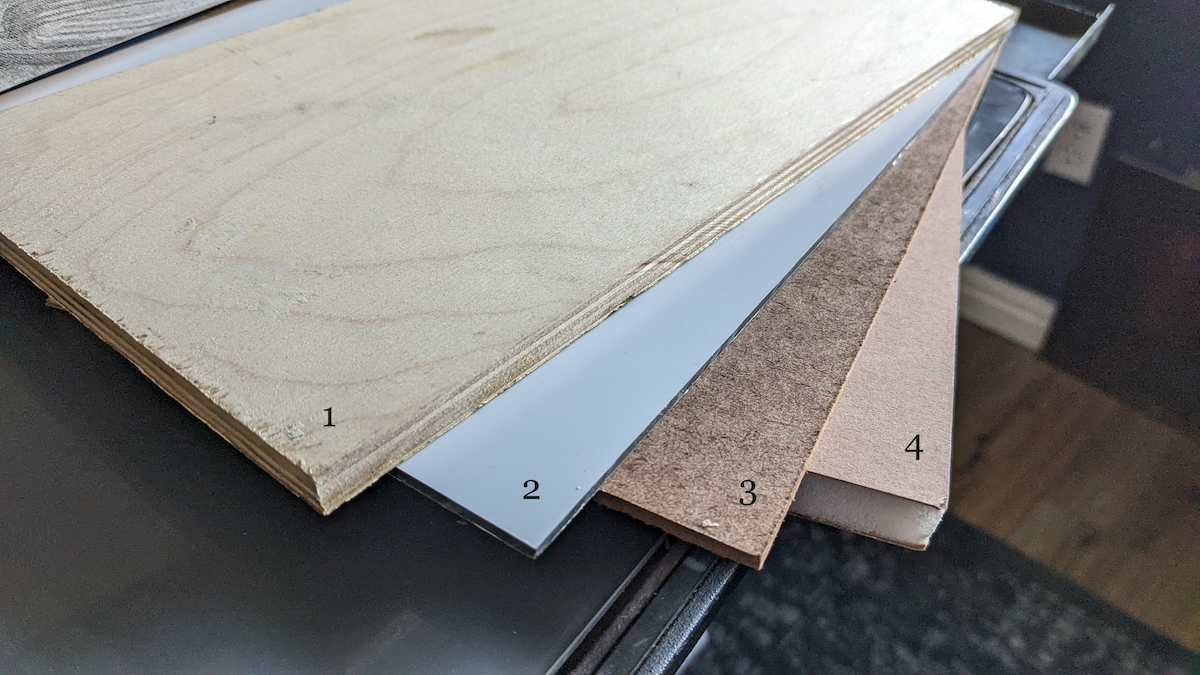
When it comes to choosing a surface to paint on, the number of options can be overwhelming, especially if you’re not sure about the differences between them. Let’s talk about the four most common panel substrate materials and a few pros and cons so that you can make a more informed decision for your paintings.
In the table below, I’ve ranked each substrate on a 1–5 scale, with 1 being worse and 5 being better.
The most important elements to me when I’m choosing a panel substrate is the weight and the ability to withstand different environments and any potential abuse those environments may bring.
Foam core is great for a lightweight material, but I don’t trust it not to get crushed among my painting supplies on a plein air trip or if I accidentally drop it. Alternatively, MDF is readily available and probably the most commonly used material because it’s cheap and thin, but it’s prone to warping.
Aluminum composite also has a thin profile, but it won’t warp like MDF. However, it can dent which is likely show up in your painting. I’ve also had more trouble keeping a canvas adhered to it than the other materials. It can be painted on directly, and many artists have done so very successfully, but it can be a tricky surface for the inexperienced artist.
That’s why I opt for a Baltic birch plywood substrate. It’s not the lightest weight material, but it is very sturdy, is less likely to warp, and is hard to dent. It gets good adhesion between the canvas and the wood because the glue can seep into the wood fibers. It’s also a beautiful surface to paint on directly when prepared properly.
Every artist has their preference when it comes to panel substrates. Which substrate you choose will depend on your painting style, experience, and personal preference, so test out a few and see which works best for you.

I like wood grate myself. Somehow not as intimidated as a blank white canvas.